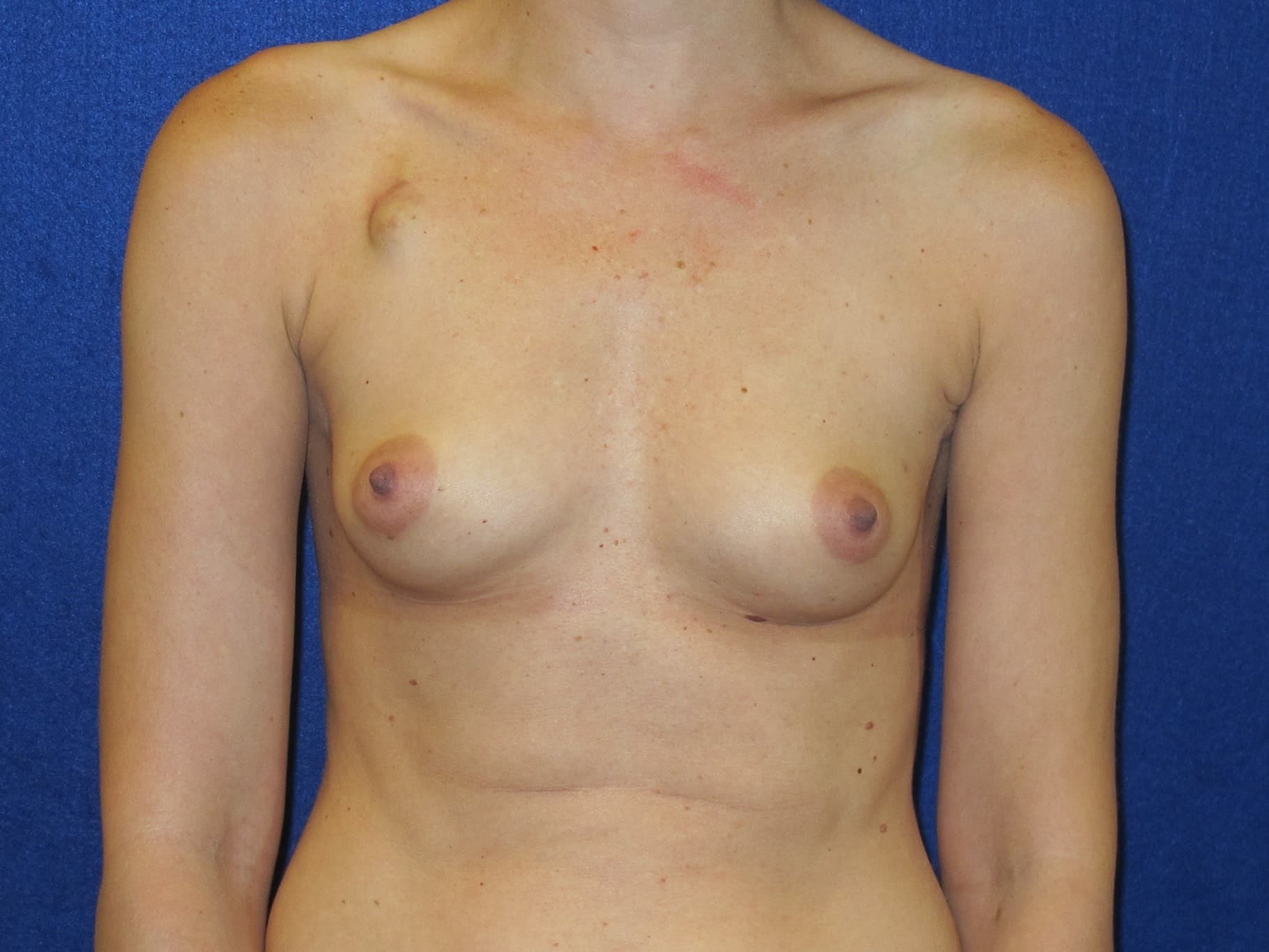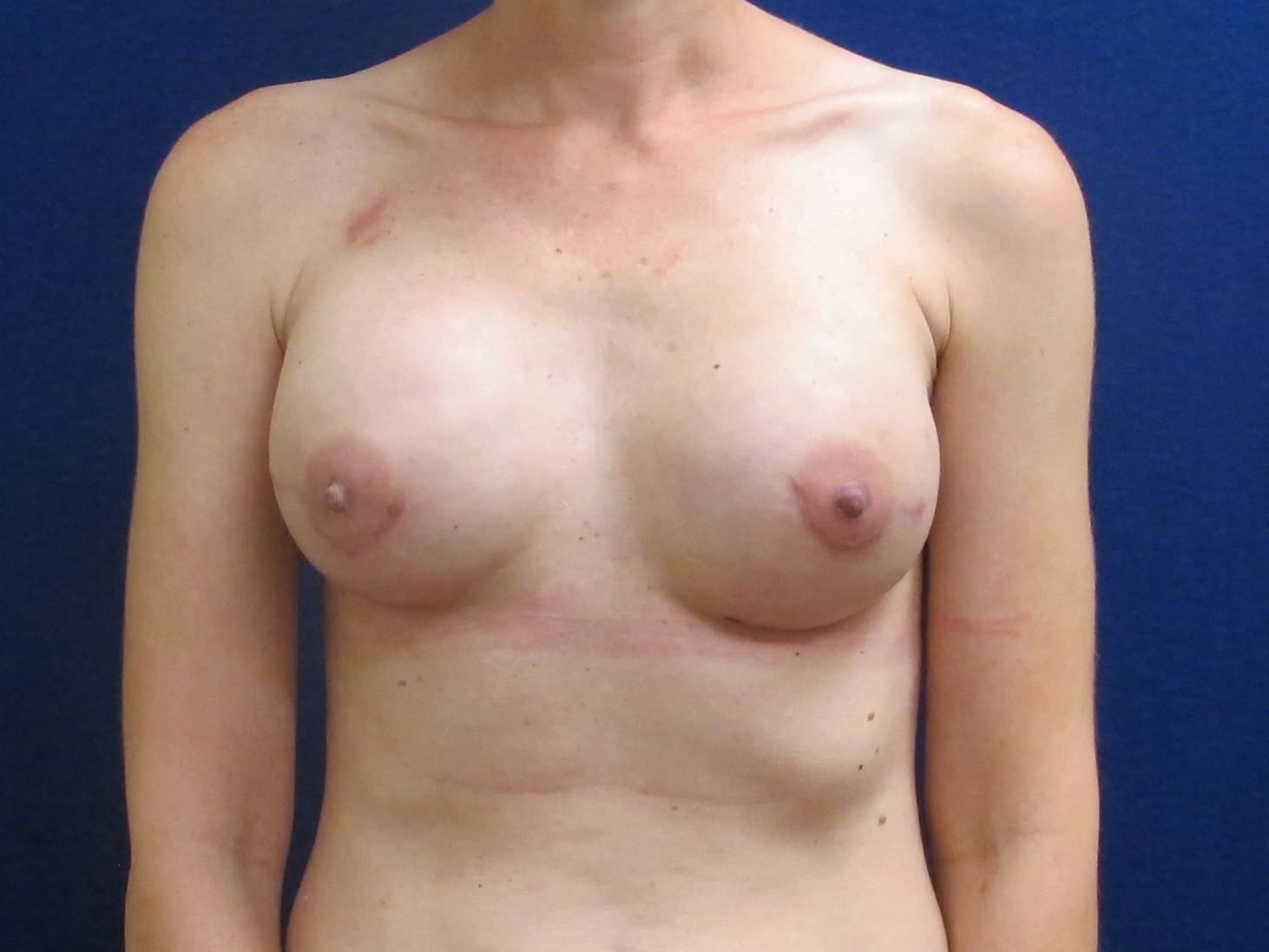Breast Reconstruction Surgery
Women undergoing a mastectomy to treat or prevent breast cancer can face many emotional and physical hurdles throughout their journey. Many breast cancer patients struggle with the thought of losing their breasts because they feel that they are losing a part of their femininity. Dr. Wilson believes that breast reconstruction can help women regain confidence and comfort with their bodies following mastectomy surgery. The goal of breast reconstruction is to restore your natural breast appearance and create a beautiful silhouette. Dr. Wilson strives to make your breasts look beautiful both in and out of clothing after reconstruction.
Customize Your Breast Reconstruction
Reconstruction Techniques
Tissue Expanders & Implants
The use of tissue expanders is the most common form of reconstruction. This technique is performed in a two-step process. First, a temporary implant (tissue expander) is positioned under the chest muscles. Over time, the expander is slowly filled to create the needed breast pocket for an implant. Once the proper pocket is created, you can undergo stage two of your reconstruction. During this step, your expander is removed and your final implant is placed. Secondary refinements, such as nipple reconstruction or fat grafting, may be performed to perfect the look of your breasts.
Flap Reconstruction
Flap reconstructions utilize the patient’s own tissue to create the breast shape and profile you desire. Flap reconstructions are ideal for patients with excess tissue along either their abdomen or back. While a flap reconstruction may require a more extensive recovery process, it yields breasts that look and feel very natural.
- TRAM flaps use muscle, fat, and skin from the abdominal region. These tissues remain attached to their original blood supply. You may have abdominal skin tightening as a result of a TRAM flap.
- Latissimus flaps use muscle, fat, and skin from your back. These tissues remain attached to their original blood supply.
Nipple Reconstruction
Nipple reconstruction is performed during the final stage of your reconstruction process. Since the nipple-areola complex is sometimes removed during the mastectomy process, recreating it is a vital step in restoring the natural appearance of your breasts. A skin graft is used to create the nipple, and the areola (the colored portion surrounding the nipple) is tattooed on.
Nipple-Sparing Mastectomy
Dr. Wilson often recommends undergoing a nipple-sparing mastectomy because it yields the most natural-looking breast reconstruction results. A nipple-sparing mastectomy removes all of the breast tissue necessary but preserves the skin of the nipple and areola. Leaving the nipple-areola complex intact allows the breast to look virtually unchanged and preserves sensation in the nipple. Additionally, incisions are placed in more natural locations, allowing you to maintain the look of your breasts. You can undergo both a tissue expander or flap reconstruction with a nipple-sparing mastectomy to achieve the best breast appearance possible. Not all patients are candidates for nipple-sparing mastectomies and Dr. Wilson will discuss this further with you at your consultation.
Fat Transfer to the Breast
Fat transfer to one or both breasts can be performed during your final reconstruction process, usually around the time of your nipple-areola reconstruction. For nearly every breast reconstruction procedure, Dr. Wilson includes fat transfer to smooth out the contour of the breasts. Fat transfer can be used to improve any breast asymmetry that has developed, mask implant edges, or hide visible implant surface irregularities. Fat transfer can create breast fullness where necessary and helps refine the overall shape of your breasts. Liposuction of one breast may also be performed to further improve the balance between your breasts.
What do you desire?
A Natural Appearance
Breast cancer patients aren’t like most augmentation patients because they often don’t want a different breast appearance than they had. Therefore, maintaining a natural look and feel is of the utmost importance for many breast reconstruction patients. You will work closely with Dr. Wilson to choose the best breast reconstruction techniques to achieve results that blend naturally with your physique. If you are choosing to use implants, Dr. Wilson will help you determine which implant will best recreate your original breast appearance.
Larger, More Shapely Breasts
There are women who decide to achieve larger, more shapely breasts when undergoing breast reconstruction. While some women wish to achieve as close to their original breast shape and size as they can, there are others who wish to create more voluptuous breasts. For qualifying patients, it may be possible to create larger, more shapely breasts than you originally had using implants. It is important to discuss your aesthetic desires with Dr. Wilson to ensure you are satisfied with your results.
Improve Age-Related Sagging
Tissue laxity in the breasts is a common result of the natural aging process. If your breasts have begun to sag, chances are you feel that your body lacks a youthful, firm appearance. Removing excess breast tissue and providing additional support to lax tissue can restore a firmer look and feel to your breast tissue. Achieving firmer breasts often helps create a more youthful body contour.
A Balanced Appearance
Breast asymmetry can develop for a number of reasons. Your breasts may heal inconsistently, resulting in differently sized and shaped breasts. Women undergoing only a unilateral mastectomy, where only one breast is removed, worry that their breast reconstruction will yield one breast that looks and feels artificial. Dr. Wilson can implement a number of techniques to correct breast asymmetry and restore a more balanced breast appearance.
Restore Confidence
Battling breast cancer is a long and arduous process. Many women lose confidence in their appearance, and their battle can rob them of their general happiness with their life. While your clean bill of health is the most important success, restoring your breast appearance can help you emotionally recover from your breast cancer battle. Having breasts that make you look and feel amazing can do wonders for restoring your confidence and contentment following your breast cancer battle.
Before & After Photos


39 year old female had bilateral nipple sparing mastectomies for breast cancer with immediate tissue expander reconstruction. She wanted her reconstructed breasts to be larger than her native breasts. During her second stage, we exchanged her tissue expanders for 445cc silicone implants.
View Photo GalleryBreast Reconstruction Concerns
Recovery
Depending on your reconstruction technique, you can leave the hospital within one to six days of your procedure. Tissue expander patients require a two- to four-week recovery period. Latissimus flaps require at least a four-week recovery, and TRAM flaps need up to six weeks. During your recovery, refrain from any vigorous activities, heavy lifting, and sexual activity. Swelling should begin to subside within two months of your procedure. It is important to perform monthly self-exams to check for potentially cancerous lumps in the breasts.
Scars
While limited-scarring techniques are used when possible, many mastectomy and breast reconstruction patients will develop visible scarring on the breasts. Many women feel that this scarring is minor compared to the physical and emotional benefits provided through surgery. Scarring will likely fade over time.
Pain
Experiencing pain and discomfort following breast reconstruction is normal. Patients who undergo a TRAM flap may experience some minor abdominal discomfort as well. Oral medication will be prescribed to help you throughout your recovery.
Risks
Infection and bleeding are the most common risks following reconstruction. Excess fluid buildup can occur following a flap reconstruction. TRAM flap patients are susceptible to abdominal bulging or hernias. TRAM flap patients may experience some abdominal weakness or loss in abdominal strength. Breast asymmetry may develop, which can require additional surgeries to correct.
Cost
The Women’s Health and Cancer Rights Act requires insurance companies to cover breast reconstruction as part of breast cancer treatment. Contact your insurance provider for further details on coverage for your procedure.
Breast Reconstruction Frequently Asked Questions in Huntsville, AL
When should I undergo my breast reconstruction?
While you can undergo breast reconstruction at any time following your mastectomy, Dr. Wilson recommends having surgery performed immediately following your mastectomy in most patients. The sooner after your mastectomy, the less scar tissue there is to work through. It is also emotionally beneficial for women to undergo the procedure soon. Some women struggle to accept their appearance without breasts, and undergoing breast reconstruction in a timely manner can provide a smoother transition between your pre-mastectomy body and your post-mastectomy body. Talk to your oncologist and Dr. Wilson to determine the best time for your reconstruction.
What type of anesthesia is used during breast reconstruction?
Breast reconstruction is performed as an inpatient or outpatient procedure with the patient under general anesthesia to ensure comfort and safety.
What type of implants are used for breast reconstruction?
If you are choosing to use implants, you can decide between saline and silicone implants. Many women choose silicone implants because they better simulate the natural look and feel of breast tissue. Dr. Wilson will help you determine your best implant option during your consultation.
What will my consultation with Dr. Wilson involve?
Dr. Wilson provides each patient with a thorough and detailed consultation. Together, you and he will discuss the best way to restore the appearance of your breasts. Dr. Wilson will work to answer all of your questions to ensure that you feel confident and comfortable throughout the entire process. It is best to come in for your breast reconstruction consultation as soon as possible so it can be included in your quality care throughout your breast cancer treatment.


